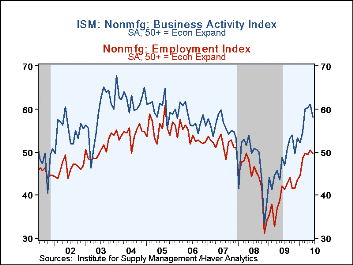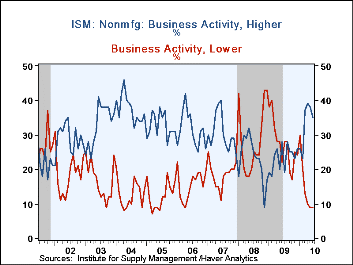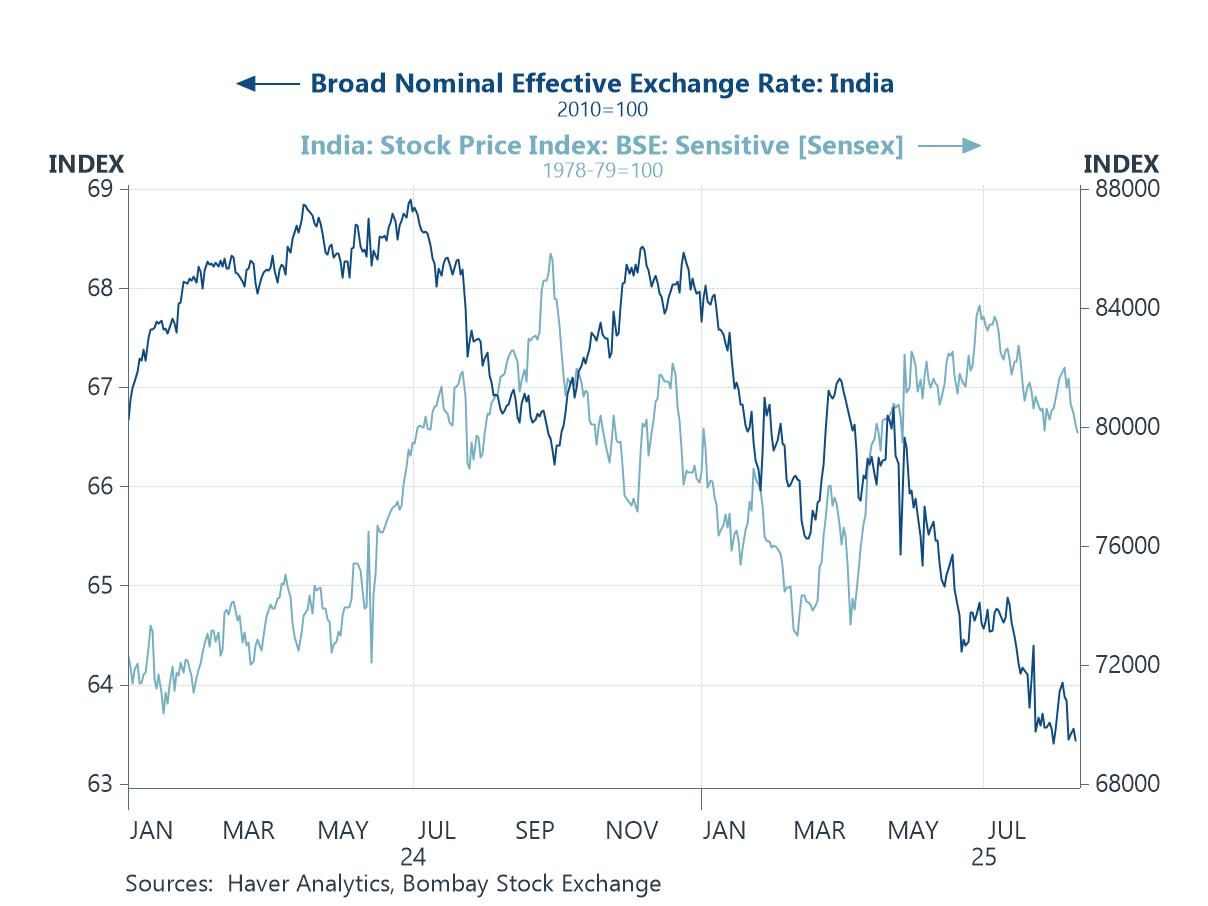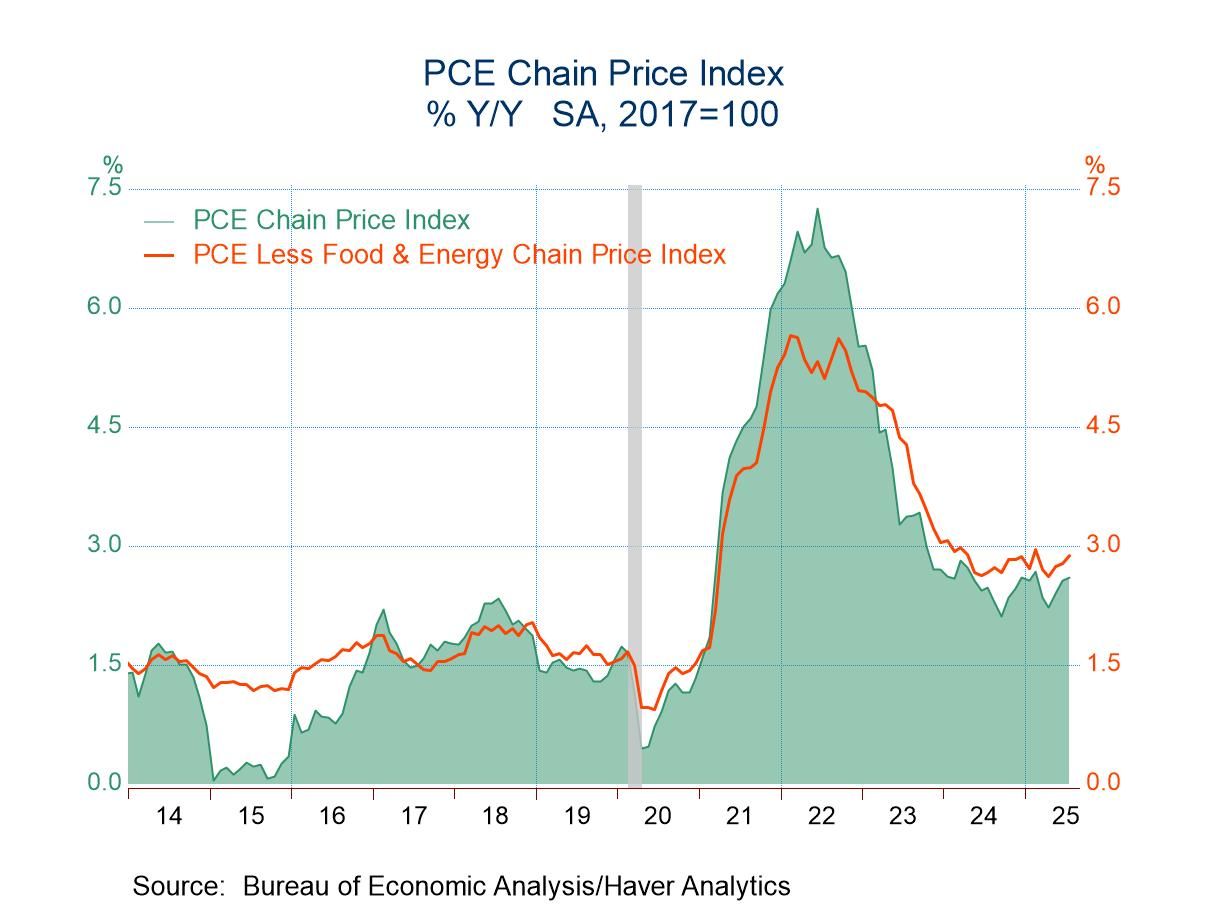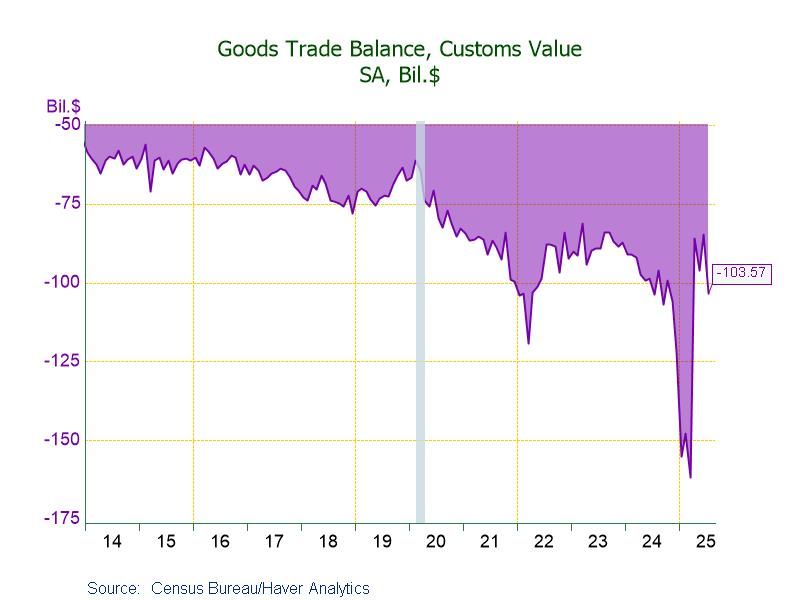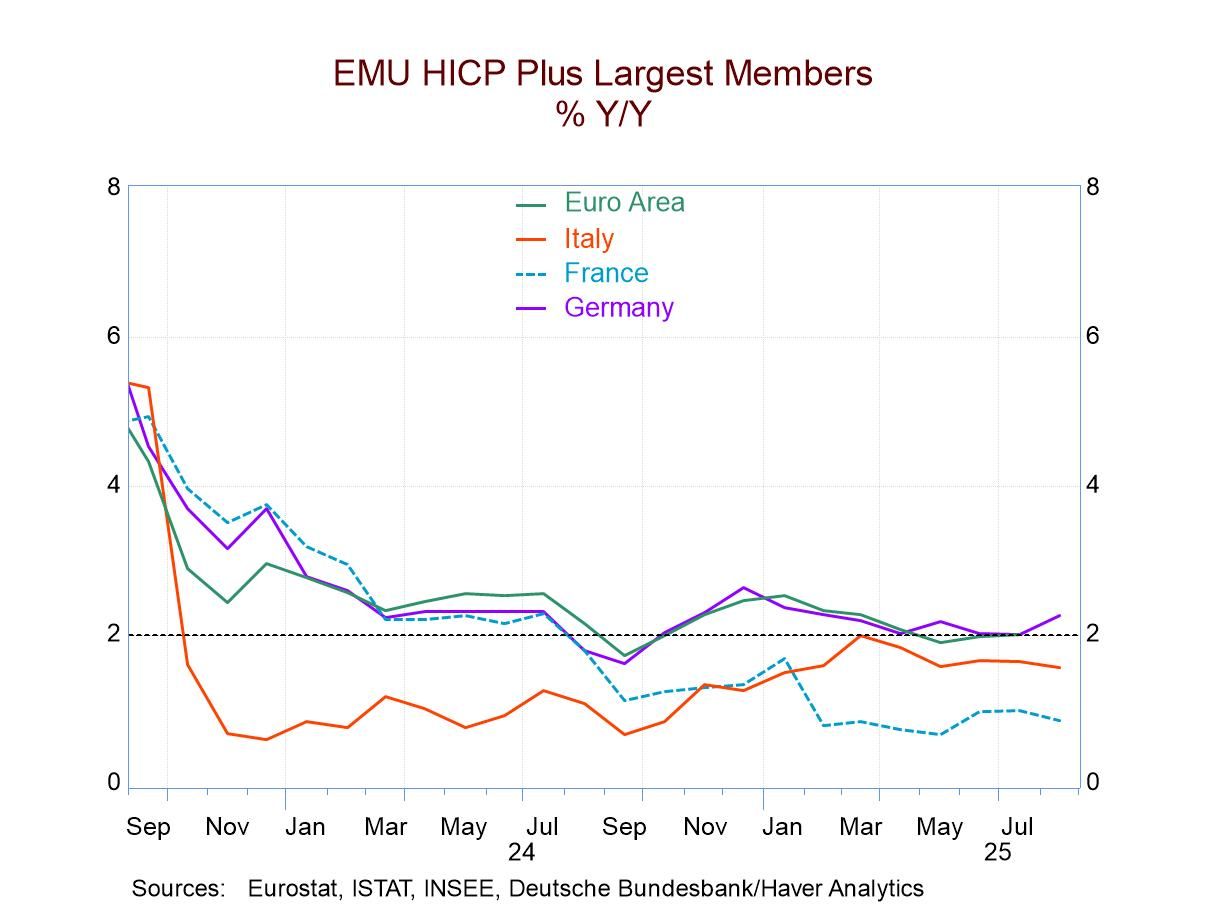 Global| Jul 06 2010
Global| Jul 06 2010U.S. ISM Nonmanufacturing Index Indicates Moderate Slowdown in Growth
by:Tom Moeller
|in:Economy in Brief
Summary
The June Composite Index for the service and construction sectors from the Institute for Supply Management (ISM) slipped during June to 53.8 after three months at 55.4. Nevertheless, the level was nearly the highest since early-2007 [...]
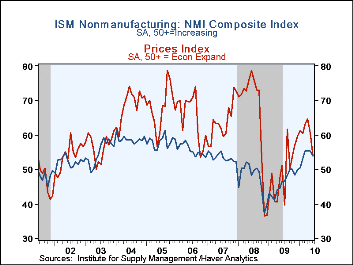 The June Composite Index for the service and construction sectors from the
Institute for Supply Management (ISM) slipped during June to 53.8 after three
months at 55.4. Nevertheless, the level was nearly the highest since early-2007
and has risen considerably from a low of 37.2 late in 2008. The latest figure
fell short of Consensus expectations for a reading of 55.0. Since the series'
inception in 1997 there has been a 65% correlation between the level of the
composite index in the nonmanufacturing sector and the q/q change in real GDP
for the services and the construction sectors.
The June Composite Index for the service and construction sectors from the
Institute for Supply Management (ISM) slipped during June to 53.8 after three
months at 55.4. Nevertheless, the level was nearly the highest since early-2007
and has risen considerably from a low of 37.2 late in 2008. The latest figure
fell short of Consensus expectations for a reading of 55.0. Since the series'
inception in 1997 there has been a 65% correlation between the level of the
composite index in the nonmanufacturing sector and the q/q change in real GDP
for the services and the construction sectors.
The business activity component posted the largest decline to 58.1 from 61.1 in May. That was followed by the decline in the new orders series. A reduced 30% of respondents reported higher new orders. The employment index backpedaled to a level slightly below the beak-even level of 50. It hit a low of 31.1 in November 2008. A reduced 18% of respondents increased hiring while 12% reported fewer jobs. That was the lowest percentage since June 2007. Since the series' inception in 1997 there has been an 80% correlation between the level of the ISM nonmanufacturing employment index and the m/m change in payroll employment in the service-producing plus the construction industries. Vendor delivery speeds remained constant m/m but they're much slower than early last year.
The pricing power index fell to 53.8 which was its lowest since October, but still it was up sharply from the late-2008 low. Twenty-seven percent of respondents reported higher prices while an improved 9% reported them lower. At the worst, late in 2008, 41% reported lower prices. Since its inception ten years ago, there has been a 73% correlation between the price index and the q/q change in the GDP services chain price index.
Beginning with the January 2008 Nonmanufacturing Report On Business ®, the composite index is calculated as an indication of overall economic conditions for the non-manufacturing sector. It is a composite index based on the diffusion indices of four of the indicators (business activity, new orders, employment and supplier deliveries) with equal weights. The latest report from the ISM can be found here.
What Is the Effect of Financial Stress on Economic Activity? from the Federal Reserve Bank of Kansas City can be found here.
| ISM Nonmanufacturing Survey | June | May | April | June '09 | 2009 | 2008 | 2007 |
|---|---|---|---|---|---|---|---|
| Composite Index | 53.8 | 55.4 | 55.4 | 46.4 | 46.2 | 47.3 | 53.5 |
| Business Activity | 58.1 | 61.1 | 60.3 | 48.8 | 48.0 | 47.4 | 56.0 |
| New Orders | 54.4 | 57.1 | 58.2 | 48.4 | 47.9 | 47.0 | 54.8 |
| Employment | 49.7 | 50.4 | 49.5 | 42.2 | 39.9 | 43.8 | 52.0 |
| Supplier Deliveries (NSA) | 53.0 | 53.0 | 53.5 | 46.0 | 49.0 | 51.1 | 51.1 |
| Prices Index | 53.8 | 60.6 | 64.7 | 51.2 | 49.4 | 66.0 | 63.8 |
Tom Moeller
AuthorMore in Author Profile »Prior to joining Haver Analytics in 2000, Mr. Moeller worked as the Economist at Chancellor Capital Management from 1985 to 1999. There, he developed comprehensive economic forecasts and interpreted economic data for equity and fixed income portfolio managers. Also at Chancellor, Mr. Moeller worked as an equity analyst and was responsible for researching and rating companies in the economically sensitive automobile and housing industries for investment in Chancellor’s equity portfolio. Prior to joining Chancellor, Mr. Moeller was an Economist at Citibank from 1979 to 1984. He also analyzed pricing behavior in the metals industry for the Council on Wage and Price Stability in Washington, D.C. In 1999, Mr. Moeller received the award for most accurate forecast from the Forecasters' Club of New York. From 1990 to 1992 he was President of the New York Association for Business Economists. Mr. Moeller earned an M.B.A. in Finance from Fordham University, where he graduated in 1987. He holds a Bachelor of Arts in Economics from George Washington University.


